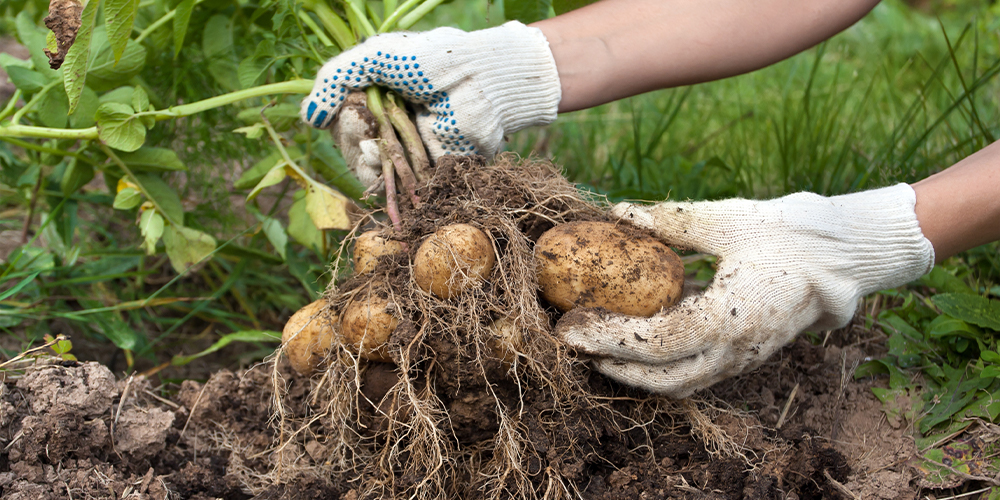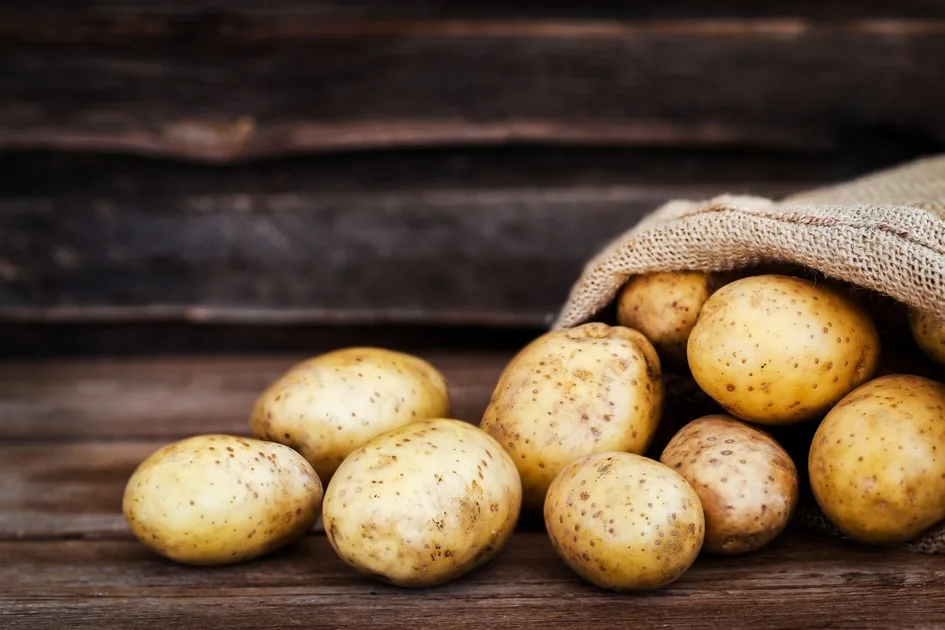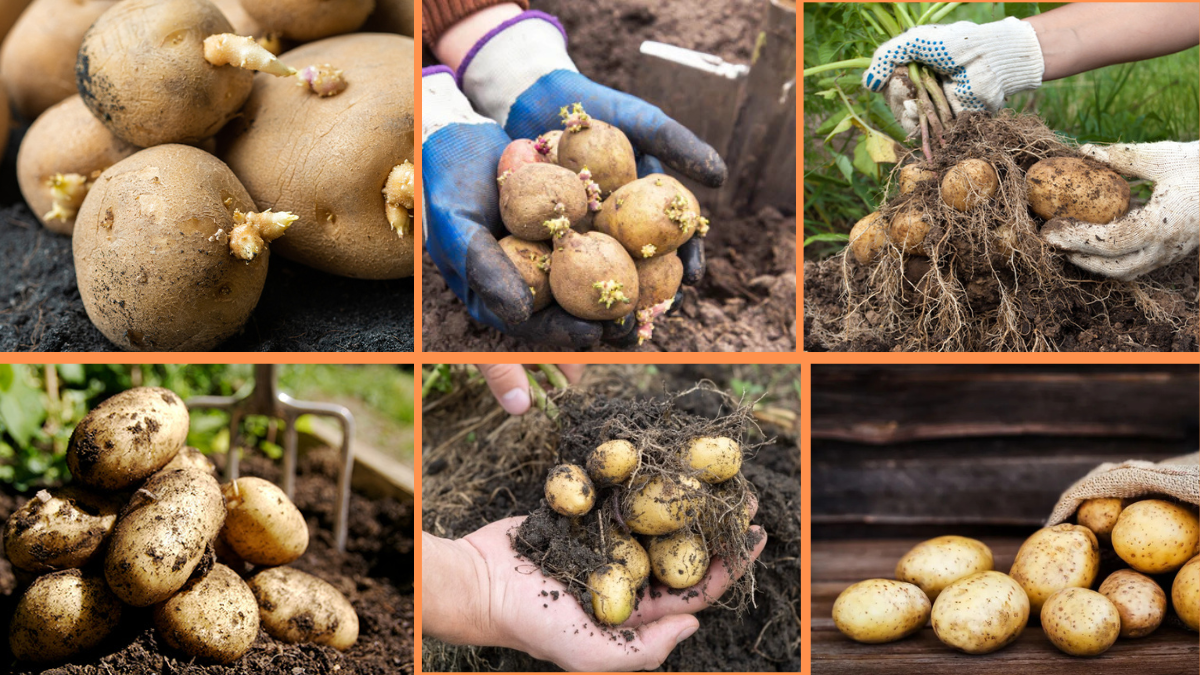There’s nothing quite like the flavor of fresh, homegrown potatoes. Whether mashed, roasted, baked, or fried — potatoes are a kitchen staple loved worldwide. The good news? Potatoes are incredibly easy to grow at home, even for beginners!
If you’re ready to enjoy the satisfaction of digging up your own harvest of tender, flavorful tubers, this comprehensive guide will teach you exactly how to start growing potatoes — from choosing seed potatoes to planting, caring for your crop, and harvesting your bounty.

Why Grow Potatoes at Home?
Potatoes aren’t just versatile in the kitchen; they’re also one of the most rewarding and forgiving crops for beginner gardeners. Here’s why you should give it a go:
Benefits of Growing Potatoes:
- Low-maintenance and beginner-friendly
- High yields from a small space
- Can be grown in the ground, raised beds, or containers
- Pest-resistant and hardy
- Incredibly versatile in the kitchen
And unlike store-bought potatoes, homegrown varieties often boast richer flavors, smoother textures, and a freshness you just can’t beat.

Types of Potatoes You Can Grow
Before planting, it’s helpful to know the main categories of potatoes, as each type offers different flavors, textures, and uses.
1. Early Potatoes
- Ready to harvest in 8–10 weeks
- Smaller size, tender skins
- Best for boiling and salads
Examples: Rocket, Swift, Red Duke of York
2. Maincrop Potatoes
- Harvested in 15–20 weeks
- Larger tubers, thick skins, good for storage
- Ideal for roasting, baking, and mashing
Examples: Maris Piper, King Edward, Desiree
Pro Tip: Early potatoes are perfect for impatient gardeners or small-space growing, while maincrops are ideal for storing through fall and winter.

When to Plant Potatoes
The planting season depends on your climate:
- Cooler climates: Plant March to May
- Warmer climates: Plant late winter to early spring
- Tropical climates: Choose cooler months or use heat-tolerant varieties
Potatoes dislike frost and waterlogged soils, so wait until the risk of heavy frost has passed and the soil is workable.

How to Start Growing Potatoes
1. Choose Certified Seed Potatoes
Always buy certified, disease-free seed potatoes from a garden center or online supplier. These are specially produced for planting, ensuring healthy, vigorous plants and reliable harvests.
Avoid supermarket potatoes, which may be treated to prevent sprouting and can carry soil-borne diseases.
2. Chit (Pre-sprout) the Potatoes
Chitting encourages sturdy shoots and faster growth.
How to chit potatoes:
- Place seed potatoes in a bright, cool, frost-free space.
- Stand them with the end showing the most “eyes” (small buds) facing up.
- Leave for 2–4 weeks until shoots are 1–2 cm long.

How to Plant Potatoes
Soil Preparation:
Potatoes thrive in loose, fertile, well-draining soil with a pH of 5.5–6.5.
- Work in plenty of compost or well-rotted manure before planting.
- Avoid fresh manure, which can cause scab disease.
Planting in the Ground:
- Dig trenches about 4–6 inches deep and 12 inches apart.
- Place seed potatoes with the shoots facing up, 12 inches apart in rows.
- Cover with soil.
Planting in Containers:
Potatoes grow beautifully in large pots, grow bags, or even old buckets.
Container tips:
- Use containers at least 16 inches deep.
- Add 4 inches of compost, lay seed potatoes on top, and cover with 4 inches of soil.
- Add soil (“earth up”) as plants grow.

Watering and Feeding
Watering:
- Keep soil consistently moist but not waterlogged.
- Avoid wetting leaves to prevent disease.
- Water deeply during dry spells, especially when tubers are forming (about 4–6 weeks after planting).
Fertilizing:
- Feed with a balanced, slow-release fertilizer at planting.
- Apply a high-potassium fertilizer (like tomato feed) when flowers appear for larger, healthier tubers.
Earthing Up (Hilling)
As potato plants grow, you’ll need to earth up or mound soil around the stems.
Why it’s important:
- Protects developing tubers from sunlight (which turns them green and toxic)
- Encourages more tuber growth
- Supports plants against wind
How to earth up:
- When shoots are 6 inches tall, mound soil or compost around them, leaving just the tips showing.
- Repeat every few weeks as plants grow.
Companion Planting with Potatoes
Good companions:
- Cabbage
- Beans
- Corn
- Horseradish (helps deter pests)
Avoid planting near:
- Tomatoes (prone to similar blight diseases)
- Carrots
Common Pests and Diseases
Potatoes are hardy but can encounter issues like:
| Problem | Cause | Solution |
|---|---|---|
| Potato blight | Fungal disease | Remove infected plants, rotate crops |
| Wireworms | Larvae in soil | Crop rotation, trap with cut potato pieces |
| Aphids | Sap-sucking insects | Spray with insecticidal soap |
Tip: Choose blight-resistant varieties for added security.
Harvesting Potatoes
When to Harvest:
- Early potatoes: 10–12 weeks after planting, when plants flower.
- Maincrop potatoes: 18–20 weeks, when foliage yellows and dies back.
Pro Tip: Harvest early potatoes as “new potatoes” while skins are thin and tender. Leave maincrops in the ground for 2 weeks after foliage dies to harden skins for storage.
How to Harvest:
- Use a garden fork to gently lift plants.
- Avoid stabbing tubers.
- Shake off soil and let dry before storing.
Storing Potatoes
- Store potatoes in a cool, dark, well-ventilated place.
- Avoid plastic bags — use hessian sacks or paper bags.
- Check regularly and remove any sprouting or rotting tubers.
Storage life:
- Early potatoes: Best eaten fresh within a few weeks.
- Maincrop: Store for 4–6 months.
Growing Potatoes from Scraps (Bonus Tip!)
Yes — you can even grow potatoes from leftover kitchen scraps!
How:
- Choose a potato with visible eyes.
- Cut into pieces, ensuring each has at least one eye.
- Dry pieces for a day to prevent rot.
- Plant in soil and care for as above.
Note: While possible, growing from scraps may carry risks of disease compared to certified seed potatoes.
Final Growing Tips
- Rotate potato crops yearly to avoid soil-borne diseases.
- Keep soil moist but not soggy.
- Protect young shoots from late frosts with cloches or fleece.
- Earth up regularly for a larger harvest.
Conclusion
Learning how to start growing potatoes is a fun, productive, and beginner-friendly gardening project. With a little preparation and care, you’ll soon be enjoying the unbeatable taste of homegrown potatoes — whether boiled, roasted, or turned into crispy fries.
From choosing seed potatoes to digging up your first harvest, this simple, rewarding crop offers satisfaction like no other. So, grab a few seed potatoes, pick your spot, and get planting — your future meals will thank you!





